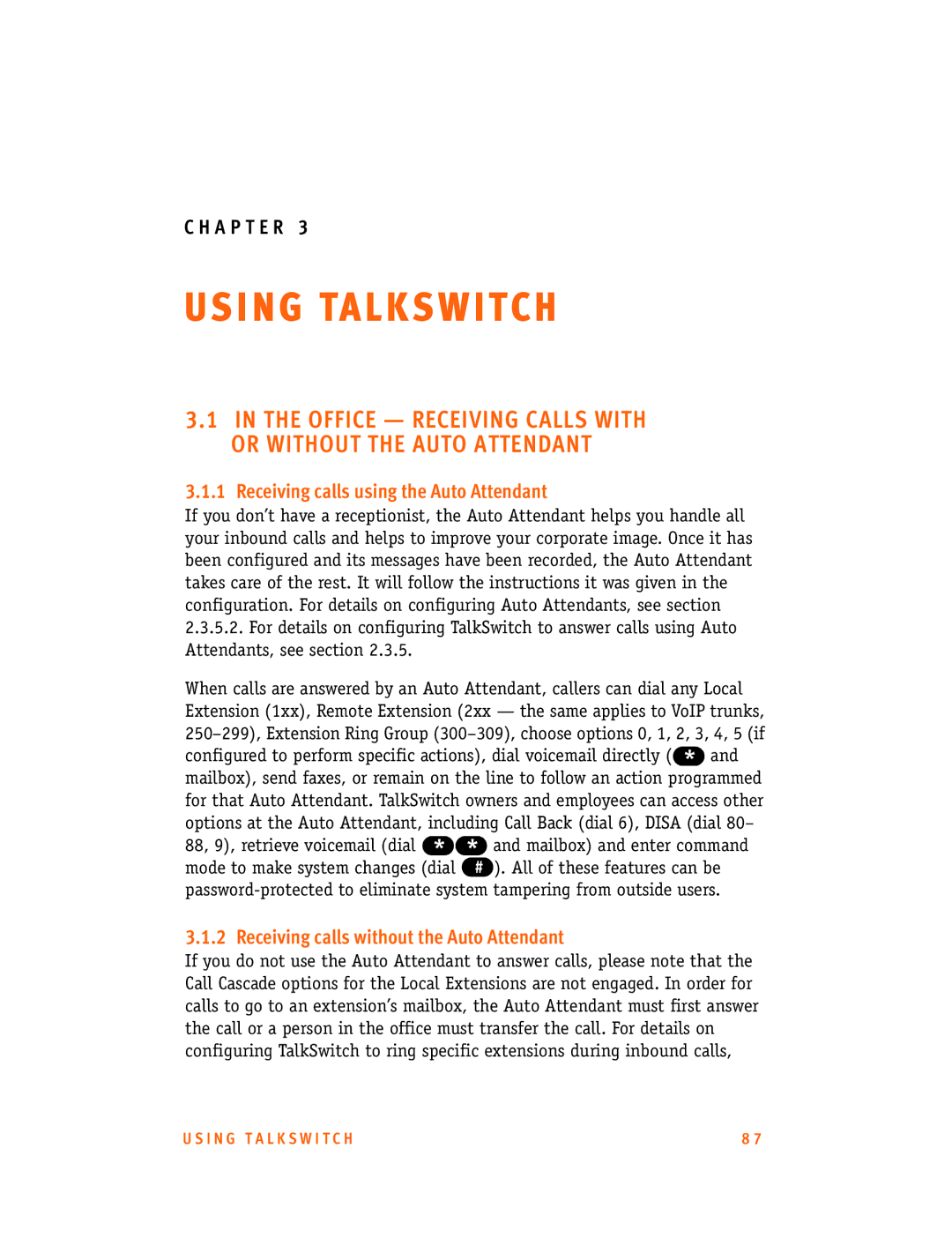
C H A P T E R 3
U S I N G TA L K S W I T CH
3.1IN THE OFFICE — RECEIVING CALLS WITH OR WITHOUT THE AUTO ATTENDANT
3.1.1 Receiving calls using the Auto Attendant
If you don’t have a receptionist, the Auto Attendant helps you handle all your inbound calls and helps to improve your corporate image. Once it has been configured and its messages have been recorded, the Auto Attendant takes care of the rest. It will follow the instructions it was given in the configuration. For details on configuring Auto Attendants, see section
2.3.5.2.For details on configuring TalkSwitch to answer calls using Auto Attendants, see section 2.3.5.
When calls are answered by an Auto Attendant, callers can dial any Local Extension (1xx), Remote Extension (2xx — the same applies to VoIP trunks,
88, 9), retrieve voicemail (dial * | * and mailbox) and enter command |
mode to make system changes (dial | # ). All of these features can be |
3.1.2 Receiving calls without the Auto Attendant
If you do not use the Auto Attendant to answer calls, please note that the Call Cascade options for the Local Extensions are not engaged. In order for calls to go to an extension’s mailbox, the Auto Attendant must first answer the call or a person in the office must transfer the call. For details on configuring TalkSwitch to ring specific extensions during inbound calls,
U S I N G T A L K S W I T C H | 8 7 |
